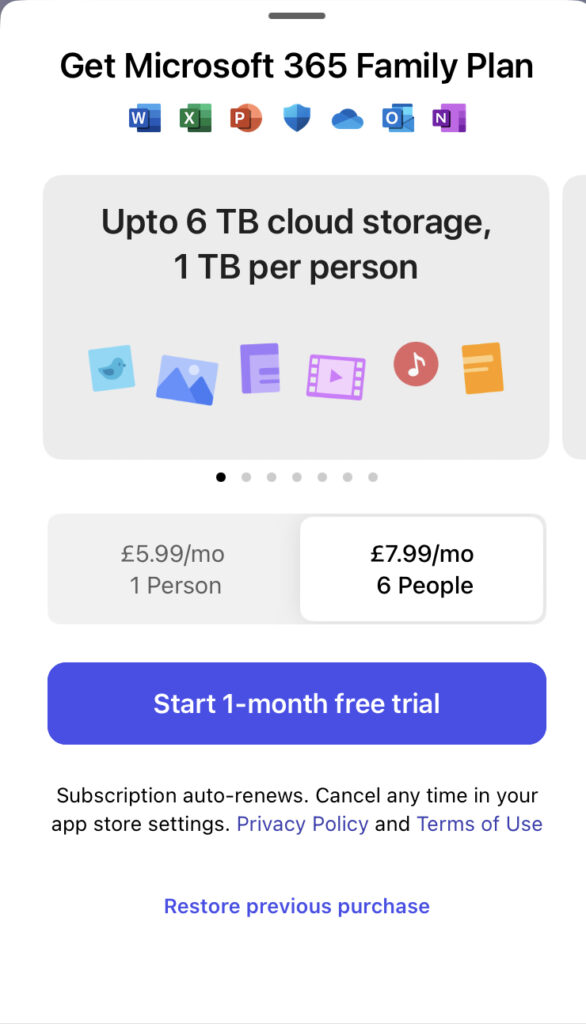Five takeaways from App Promotion Summit London 2024
Could weekly subscriptions, web-to-app, and empathy-based onboarding be your next unlocks for growth?


Peter Meinertzhagen
Last week, the RevenueCat team had the pleasure of attending App Promotion Summit London, and it was fantastic meeting so many of you! I also had the chance to attend many of the talks throughout the day — nothing quite beats hearing these case studies directly from the folks involved.
With so much great stuff shared during the day, it was challenging to narrow it down, but I’ve distilled the key takeaways that I believe will be most interesting for other subscription apps looking to drive growth and innovation.
With the help of weekly subscriptions, Grindr makes more revenue per download than Tinder
Opening Address: Capture Your Share of the Mobile-First Future – Salman Chaudhry, Sensor Tower
According to Pew Research Center, only about a third of dating app users pay for them. How can you win over users who are unwilling to pay for a premium monthly subscription or underestimate the amount of time that they need to be paid-up members? Offer a weekly subscription.
Traditionally, the LGBTQ dating app Grindr has seen good retention but has struggled to monetize. However, Grindr is now growing in-app revenue well through the adoption of weekly subscriptions — and, interestingly, monthly subscriptions don’t appear to have seen an impact. This suggests that the weekly subscriptions are targeting a new audience of Grindr users. The result is that Grindr now makes more revenue per download than Tinder.
The weekly model, in particular, serves as an excellent test case for apps exploring ways to increase accessibility and affordability, leading to better conversion rates among users initially reluctant to commit to longer terms.
For apps like Memrise, AI is an accelerator
How to use AI to go from “Established Meh” to Engagement Rocketship – Steve Toy
We’re going to be returning to AI a great deal over the next few years. There is a quote from Phil Carter in our 2024 predictions blog that seems apt: “Consumer subscription companies that fail to adapt [to AI] may quickly become obsolete”. A touch hyperbolic, perhaps, but it might be hard to catch up with apps like Memrise that are fully embracing AI.
There are three key ways that Memrise uses AI:
- Traffic acquisition via SEO, through the rapid creation of content.
- Rapidly expanding language offerings, increasing the size of the market Memrise can serve.
- More immersive learning experience, through its “MemBot” and curation of video content to use in lessons.

This acceleration to growth and content creation would have been impossible without the use of AI.
Web-to-app drives majority of revenue for PlantIn
Navigating Growth: Power and Opportunities of the Web-to-App Funnel – Anastasiia Karlova
Due to privacy changes, tracking users via the App Store has become increasingly difficult over the last few years. Nonetheless, the App Store provides a seamless user experience for potential subscribers and higher conversion rates (versus web checkouts) reflect this. However, apps like PlantIn are coupling this seamless experience with sophisticated web-to-app funnels that allow for greater optimization, scaling, and automation.
65% of plant care and identifier app PlantIn’s revenue comes from web-to-app funnels. They’ve discovered that high-performing web landing pages are:
- Simple
- Clickable
- Use an “install now” (or similar) call-to-action
- Match the user’s pain
- Localized to geo
- Using an “infinite testing loop”
Perhaps one of the key learnings Anastasiia shared was to think of web-to-app as a single funnel. Make sure that when a user sees and clicks on your web landing page that the experience through to install and onboarding makes sense as a continuous journey. This means that the onboarding journey should match the landing page (and, therefore, goal that the user is hoping to accomplish).
Sometimes the simplest of experiments are the most impactful (especially for apps at Microsoft’s scale)
Lessons from Growing Microsoft 365 and Copilot: A Live Sub Club Recording – Ramit Arora and David Barnard
This was the second time that David interviewed Microsoft’s Ramit Arora (the first was at MAU Vegas earlier this month) and while they covered new subject matter, there was a key point in common that I wanted to call out. Like the takeaway itself, it’s so simple and yet so important, that it bears repeating.
When it comes to testing your monetization (and more besides), simple changes work. The example Ramit shared was the presentation of their Office 365 subscription plans, where two variables were tested. In the first experiment, they reordered the plans so that the family plan was the default plan, and in the second, they anchored the yearly subscription price to the monthly equivalent. Both experiments caused a significant lift in revenue. In the case of price anchoring, this also worked excellently for the app, Mojo.

There are a couple of things that we can learn from this:
- When evaluating experiments and optimizations to work on, you should aim to prioritize based on estimated impact. Usually, these will be optimizations that affect the greatest number of users. For most apps, especially at the large scale, these will be the simplest of changes.
- Acknowledge that it’s usually the most fundamental of things that most apps get wrong or under-optimize. Paywall placement, onboarding, pricing and packaging… these are the places you should start — whether you’re a small indie app or, as Ramit has proven, a huge app like Office 365.
Optimizing your onboarding? Learn from Headway and add some empathy
Have Your Cake and Eat It Too: Driving Conversions through Empathy-Based Onboarding – Yeva Koldovska
This isn’t the first time I’ve come across a breakdown of Headway’s onboarding flow — Jacob Rushfinn did an excellent analysis on LinkedIn. Through Yeva Koldovska’s talk, we now have some first-hand insight.
Length does come up, but the focus was on “empathy-based” onboarding. Often, monetization is at loggerheads with user experience. To monetize more aggressively, one often needs to harm the experience for users. Empathy-based onboarding — which we can interpret as meaning an onboarding that understands, acknowledges, and responds to a user’s feelings — aims to bring these two often-conflicting sides into balance.
We can split this style of onboarding into four steps:
- Identify user feelings
- Understand your users’ motivations as best you can through user research and onboarding survey questions
- Use a long onboarding approach — Headway uses a whopping 35 questions during onboarding
- Acknowledge user feelings
- Give the user feedback based on what they answer during onboarding with customized screens
- Offer a solution to user problems
- Show that your app is a solution to the user’s problems and that their answers have gone into a customized app experience by highlighting relevant content
- Now’s the time to show the paywall
- All the questions and screens that have come before are readying the user to want to subscribe
- If the user wants to dismiss, keep offering solutions: at this point, offer the user a free trial (this step increased Headway’s ARPU by 14%)

In summary
- Offer flexibility with subscription plans: Grindr’s success with weekly subscriptions demonstrates the potential of offering flexibility to cater to diverse user preferences.
- Use AI as a growth accelerator: Memrise showcases how AI can significantly speed up content creation, expand market reach, and enrich user engagement — emphasizing the need for (some) subscription apps to leverage AI to stay competitive.
- Optimize your web-to-app funnels: PlantIn’s experience illustrates the effectiveness of sophisticated web-to-app funnels, providing greater flexibility and scaling for paid user acquisition.
- Experiment with fundamental things: Microsoft 365’s experiments reveal that simple changes in subscription plan presentation can lead to significant increases in revenue, proving that sometimes less is more.
- Use empathy in onboarding: Headway’s use of an empathy-based onboarding process shows that you can monetize efficiently without compromising user experience.
In-App Subscriptions Made Easy
See why thousands of the world's tops apps use RevenueCat to power in-app purchases, analyze subscription data, and grow revenue on iOS, Android, and the web.



